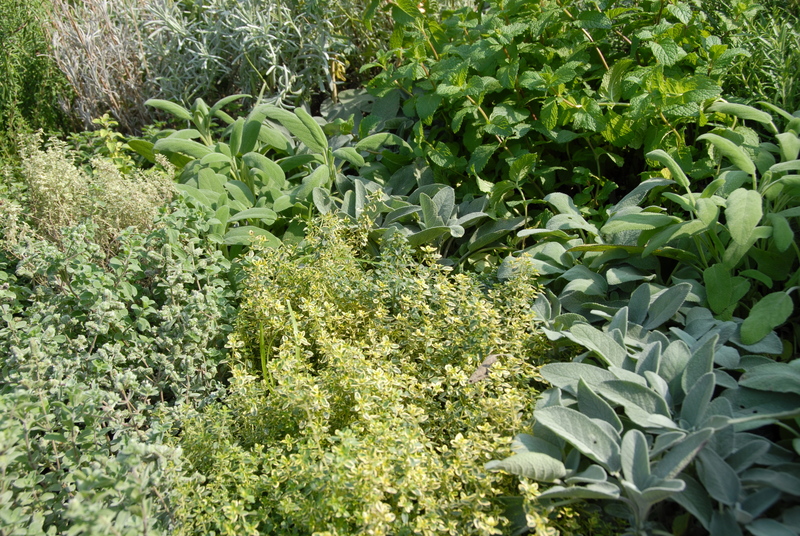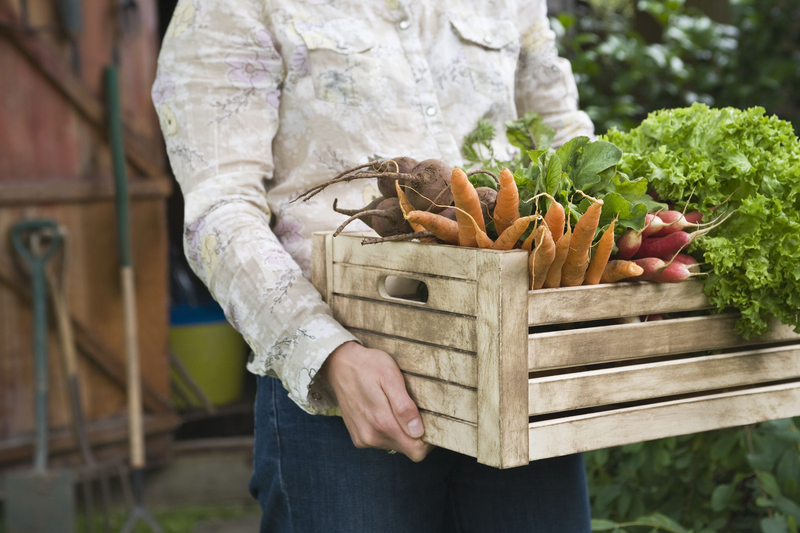Green Fingers, Cooler Planet: The Role of Gardening
Posted on 07/09/2025
Green Fingers, Cooler Planet: The Role of Gardening
Have you ever wondered how a simple garden can impact the fight against climate change? Or how nurturing your green fingers can contribute to a cooler planet? This comprehensive article explores the transformative power of gardening for individuals, communities, and the environment.
Introduction: The Rise of Eco-Conscious Gardening
With climate change becoming a global concern, many individuals are searching for practical ways to make a difference. Gardening for a sustainable future is gaining traction worldwide, as people recognize the powerful role gardens play in supporting environmental health and promoting personal well-being. From reducing carbon footprints to conserving water, gardens--regardless of their size--are vital green spaces in the quest for planetary cooling.

The Environmental Impact of Gardens
Gardening as a Carbon Sink
One of the most remarkable benefits of cultivating green spaces is the garden's ability to act as a carbon sink. Through photosynthesis, plants absorb carbon dioxide (CO2), a major greenhouse gas, and release oxygen, lowering over atmospheric concentration of CO2. This natural process underlines why eco-gardening is a key component in climate action strategies.
- Lawns, shrubs, and trees sequester carbon, storing it in their tissues and in the soil.
- Healthy compost and mulch improve soil quality and further enhance carbon sequestration.
- Permaculture gardens mimic natural ecosystems and can store even more carbon than conventional gardens.
Reducing Urban Heat Islands
Urban centers are prone to the "heat island" effect, where concrete and asphalt absorb and radiate heat, raising temperatures. Well-planned gardens counteract this by shading surfaces, evaporating water, and cooling the air, making cities more bearable during heatwaves. Encouraging sustainable gardening initiatives in urban areas can significantly help to cool our planet.
- Trees and trellised plants provide shade for buildings, reducing reliance on air conditioning.
- Vertical gardens and green roofs lower building temperatures and support urban biodiversity.
Biodiversity: Gardening for Wildlife and Pollinators
Biodiverse gardens are sanctuaries for insects, birds, and other wildlife. Planting native species and a variety of nectar-rich flowers supports bees, butterflies, and other essential pollinators. By fostering wildlife habitats, gardeners play a critical role in maintaining ecosystem balance and resilience.
- Wildflower meadows attract pollinators and beneficial insects.
- Ponds and log piles create homes for amphibians and invertebrates.
- Hedgerows serve as wildlife corridors, connecting fragmented green spaces.
Gardening and Sustainable Living
Reducing Food Miles Through Home Growing
The produce we buy often travels thousands of miles from farm to table, leading to substantial carbon emissions. Growing your own vegetables and fruits at home is a simple but powerful way to reduce "food miles" and environmental impact. Even small-scale gardens, balcony planters, or community allotments contribute to a more self-sufficient lifestyle and a cooler planet.
- Fresh, home-grown produce is free from transportation and packaging emissions.
- Excess harvests can be preserved, reducing food waste year-round.
- Supporting local seed exchanges encourages plant diversity and food security.
Composting: Recycling Organic Matter
Composting garden and kitchen waste reduces landfill contributions and returns essential nutrients to the soil. This closed-loop system not only cuts methane emissions but enhances soil fertility, supporting robust plant growth for future harvests.
- Compost piles create valuable humus for flowerbeds, lawns, and vegetable patches.
- Wormeries accelerate decomposition, turning scraps into rich vermicompost.
- Mulching with compost helps retain soil moisture, reducing the need for irrigation.
Water Conservation Techniques in the Garden
With global water shortages on the rise, gardeners must adopt water-wise practices to ensure sustainability. Rainwater harvesting, drip irrigation, and mulching are effective ways to conserve this precious resource, supporting the goal of greener, cooler environments.
- Collect rainwater in barrels or tanks for garden use.
- Utilize drought-resistant and native plant varieties.
- Apply mulch to suppress weeds and minimize evaporation.
The Social and Psychological Benefits of Gardening
Green Fingers, Green Minds: Mental Health Advantages
Gardening is not only about nurturing plants; it's also an act of self-care. Numerous studies demonstrate how spending time in green spaces relieves stress, enhances mood, and improves cognitive function. The rhythmic tasks involved in gardening--planting, weeding, watering--are meditative and grounding. Therapeutic horticulture is now used to support mental health in hospitals, schools, and community centers worldwide.
- Increased exposure to sunlight can boost vitamin D and serotonin levels.
- Gardening promotes mindfulness and reduces symptoms of depression and anxiety.
- Access to nature improves concentration and overall sense of well-being.
Building Community Through Gardens
Community gardens foster a sense of connection and enable collective action for urban greening. Sharing harvests, knowledge, and responsibilities strengthens the social fabric, empowering neighbors to work together toward a common environmental goal.
- Community plots provide affordable access to healthy, fresh produce.
- Gardening workshops and festivals celebrate cultural diversity and heritage.
- Public green spaces offer safe havens for relaxation, play, and social interaction.
Gardening for All Ages: Intergenerational Learning
From toddlers to seniors, gardening is a lifelong learning journey. Children develop responsibility and patience as they care for plants, while older generations can pass down wisdom about traditional plant uses, permaculture, and ecological stewardship. School gardens, in particular, educate young people about nutrition, ecology, and sustainability, reinforcing lifelong green habits.
- Children learn STEM concepts through hands-on experiences in the garden.
- Gardening clubs promote teamwork and a sense of accomplishment.
- Family gardens encourage healthy eating and physical activity.
Practical Tips for Climate-Friendly Gardening
Steps to Cultivate Your Own Green Fingers
Want to be part of the planet-cooling gardening revolution? Here are expert tips to maximize your impact and create a lush, sustainable garden, no matter your space or experience level:
- Choose Native Plants: Native flowers, trees, and shrubs are adapted to your local climate and support indigenous wildlife.
- Avoid Chemical Inputs: Use natural fertilizers and pest controls to protect soil life and prevent pollution.
- Prioritize Perennials: Perennial plants don't need annual replanting, reducing soil disturbance and saving water.
- Maximize Diversity: A varied garden attracts more pollinators and creates a balanced ecosystem.
- Embrace Multifunctional Spaces: Design areas that combine beauty, productivity, and wildlife value--such as edible borders or wildflower lawns.
Innovations in Sustainable Landscaping
Forward-thinking gardeners are experimenting with permaculture principles, food forests, and integrated water management systems. By replicating the complexity of natural systems, these innovative gardening methods improve resilience and carbon storage, contributing directly to a cooler planet.
Case Studies: Gardens Making a Difference
Urban Rooftop Gardens: Cooling Skyscrapers
In cities like New York and Singapore, rooftop gardens are turning concrete jungles into green oases. These elevated spaces absorb rainwater, provide habitat for pollinators, and reduce building temperatures, showcasing the immense potential of urban gardening to fight climate change.
Edible Forest Gardens: Carbon Storage in Practice
Communities embracing forest gardening have transformed degraded land into abundant food-producing ecosystems. By layering trees, shrubs, and perennials, these gardens offer persistent carbon sequestration and improve local food resilience--a clear win for people and planet alike.
Community Gardening Movements
Groups such as Incredible Edible (UK) and the Green Guerrillas (USA) empower citizens to reclaim and plant vacant lots. Their projects deliver healthy food, greener streets, and a stronger sense of belonging while directly supporting climate-cooling efforts on a neighborhood scale.

Toward a Greener Future: The Global Potential of Gardening
If every individual and community picked up a trowel, the combined effect would be profound. Consider:
- Global carbon reductions through widespread planting.
- Improved food security and healthier diets.
- Cleaner air, cooler urban temperatures, and vibrant urban biodiversity.
- Stronger, more connected societies working toward environmental goals.
Governments and organizations are increasingly recognizing the importance of home and community gardens in achieving United Nations Sustainable Development Goals (SDGs). Educational campaigns, grant programs, and urban greening policies are all amplifying the positive impact of garden-based climate action.
Conclusion: Planting Hope for a Cooler Planet
From humble window boxes to sprawling community allotments, gardens are climate champions. Through practices like composting, wildlife-friendly planting, and sustainable landscaping, we can transform our surroundings and collectively cool the planet.
Cultivating green fingers isn't just a hobby--it's a revolution. With each seed sown, we lay the foundation for a resilient planet and a brighter, greener future. Whether you are a seasoned gardener or a budding enthusiast, your garden matters. Start digging today and be part of the global movement for a cooler, more sustainable world.
Frequently Asked Questions (FAQ): The Role of Gardening in Climate Action
- How does gardening help reduce climate change?
Gardening captures carbon, cools urban environments, and conserves resources, making it a key strategy for climate mitigation. - Can small-space gardening make a difference?
Yes! Window boxes, balcony planters, and micro-gardens all contribute to urban greening and environmental resilience. - What are the best plants for a sustainable, planet-friendly garden?
Native, drought-resistant, and perennial species are ideal for supporting wildlife and adapting to changing climates.
Ready to nurture your green fingers and help cool the planet? Start small, think big, and grow with purpose. Because together, our gardens offer hope for a sustainable world.



